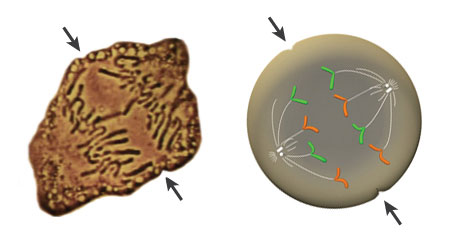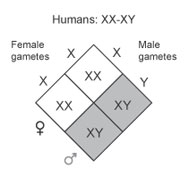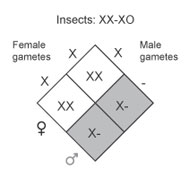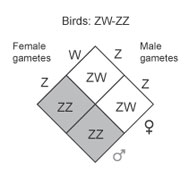« Prev Next »

The Sex of Offspring Is Determined by Particular Chromosomes

An idea inspired by the "X element"
By the 1880s, scientists had established methods for staining chromosomes so that they could be easily visualized using a simple light microscope. With this staining method, scientists were able to observe cell division and to identify the steps that occurred during both mitosis and meiosis (Figure 1).
The first indication that sex chromosomes were distinct from other chromosomes came from experiments conducted by German biologist Hermann Henking in 1891. While using a light microscope to study sperm formation in wasps, Henking noticed that some wasp sperm cells had 12 chromosomes, while others had only 11 chromosomes. Also, during his observation of the stages of meiosis leading up to the formation of these sperm cells, Henking noticed that the mysterious twelfth chromosome looked and behaved differently than the other 11 chromosomes. Accordingly, he named the twelfth chromosome the "X element" to represent its unknown nature. Interestingly, when Henking used a light microscope to study egg formation in female grasshoppers, he was unable to spot the X element.
Based on his observations, Henking hypothesized that this extra chromosome, the X element, must play some role in determining the sex of insects. However, he was unable to gather any direct evidence to support his hypothesis.
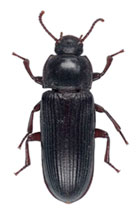
More than a decade after Henking's work, Nettie Stevens surveyed multiple beetle species and examined the inheritance patterns of their chromosomes. In 1905, while studying the gametes of the beetle Tenebrio molitor (Figure 2), Stevens noted an unusual-looking pair of chromosomes that separated to form sperm cells in the male beetles. Based on her comparisons of chromosome appearance in cells from male and female beetles, Stevens proposed that these accessory chromosomes were related to the inheritance of sex.
Over time, other scientists studied the appearance of chromosomes in a wide variety of animal species, and it became clear that there was a relationship between the physical appearance and number of chromosomes in gametes and somatic cells from males and females of a given species.
The variety of sex determination systems
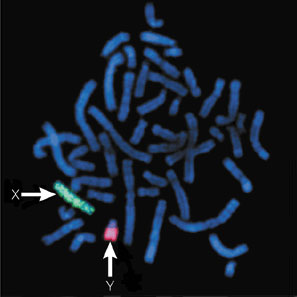
If the three systems discussed above are compared in side-by-side
Punnett squares (Figure 7), it is easy to see that sex determination is
simply a matter of gamete assortment. Determinations of male and female
character arise from a variety of different gamete combination patterns,
all of which are the result of gender coding in sexually reproducing
organisms.
Further Exploration
Key Questions
Key Concepts
sex chromosomes | X chromosome | sex determination | XX-XO system | XX-XY system | ZZ-ZW systemeBooks
This page appears in the following eBook




